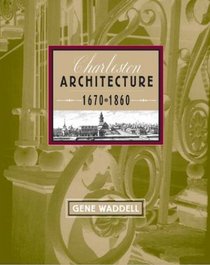Search -
Charleston Architecture: 1670-1860
Charleston Architecture 16701860
Author:
This book is about how a consistently high standard of excellence was achieved in Charleston architecture in the eighteenth and nineteenth centuries. Regardless of what style Charleston's architects used—Greek or Roman, Gothic or Renaissance, Adamesque or Greek Revival—they were in agreement about what constituted excellence. Special e... more »
Author:
This book is about how a consistently high standard of excellence was achieved in Charleston architecture in the eighteenth and nineteenth centuries. Regardless of what style Charleston's architects used—Greek or Roman, Gothic or Renaissance, Adamesque or Greek Revival—they were in agreement about what constituted excellence. Special e... more »
ISBN-13: 9780941711685
ISBN-10: 0941711684
Publication Date: 11/1/2003
Pages: 1,000
Rating: ?
ISBN-10: 0941711684
Publication Date: 11/1/2003
Pages: 1,000
Rating: ?
0 stars, based on 0 rating
Genres:
- Travel >> United States >> Regions >> South >> South Atlantic
- Engineering & Transportation >> Architecture >> General
- Engineering & Transportation >> Architecture >> Regional >> United States (Southern)
- Engineering & Transportation >> Architecture >> History




